Decision-Making: An Applied Case of Problem-Analysis and Solutions Finding

Collecting data on organizational decisions, analyzing it and checking it for accuracy will bring insights into the performance of a business, however this does not guarantee adequate decision-making.
Therefore, to ensure that these insights are effectively transformed into actions, one should be familiar with the main steps of the decision-making process, as well as the most commonly used decision-making techniques.

Figure 1: Decision-Making process
1. Assess the current situation
The first step of the decision-making process would be to assess the current situation based on the available data. Data analysis helps pinpoint the most crucial organizational issues drilling down into the performance of internal processes as well.
On the one hand, defining the problem correctly will save decision-makers time and money. On the other hand, confusion about the problem at hand will lead to lack of focus and efficiency in actions taken, based on data analysis.
Let’s take the example of a company operating in the telecommunications industry, which is looking into the following dashboard for its Customer Service Department.

Figure 2: Organizational Dashboard
The target for # Customer complaints received being 210, there is clearly a problem with the company’s operations that leads to an increased number of customer complaints. The problem therefore needs to be identified and adequate solutions provided.
2. Search for solutions
After correctly stating the problem, one needs to search for solutions and come up with ideas to solve it. This implies analyzing the stated problem, considering all the variables and data available at hand (time, financial data, frequency of occurrence, etc.).
By making use of brainstorming sessions, preferably conducted with the participation of the organization’s main stakeholders – possibly during the performance review meeting, decision-makers should list more than one solution for the problem at hand.
In the case of the aforementioned telecommunications company, the purpose of the performance review meeting would be to find out the cause of the increasing number of customer complaints, after which they would suggest and evaluate solutions.
Moreover, they’d have to also focus on developing initiatives to improve the results of # Customer complaints received, as it is nonetheless an indicator of customer dissatisfaction with the company’s products or services.
As a first step, the problem needs to be defined correctly. In order to do this, managers must learn to distinguish between problems and symptoms. Using root cause analysis tools, such as the Fishbone (Ishikawa) Diagram and problem analysis techniques such as the 5 Whys, can help with identifying the causes that lie at the heart of the issues.
The high number of customer complaints in this case may most likely be a symptom of a deeper conundrum; therefore, we use the 5 Why Method to determine why this indicator is not meeting its target.
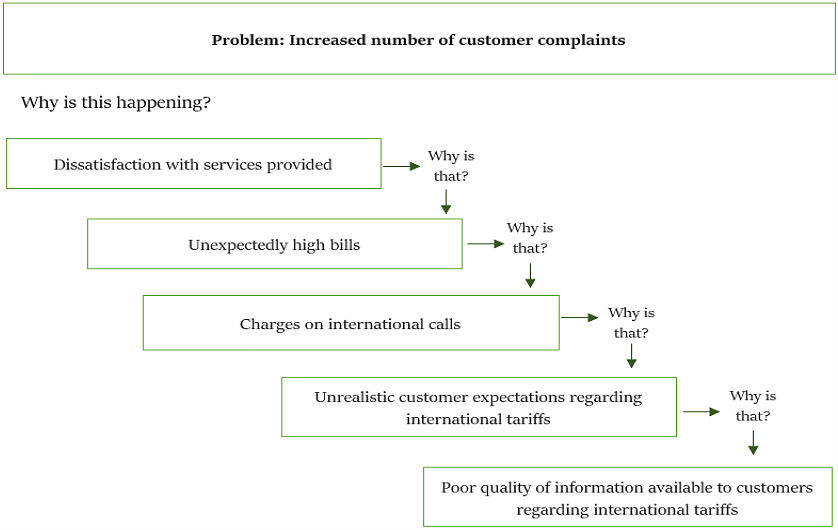
Figure 3: 5 Why’s Technique
According to the 5 Whys Root Cause analysis, the cause for complaints is dissatisfaction due to unexpectedly high bills, or bill-shock. However, the issue is not related to incorrect charging, but in most cases, unexpected charges while being abroad.
This means that customers don’t have adequate information regarding their monthly allowance and international charges, which leads to unrealistic expectations in many of the cases.
What is interesting about this is the fact that even though most of the time the high number of complaints are directly associated with the Customer Service department, in this case asking the question Why? five times points to a different direction regarding the root cause of the issue.
In order to go even deeper into the causes of the problem, a Fishbone Diagram is used to identify other possible factors that are contributing to the increase in customer complaints.
In order to develop the Fishbone Diagram, several facts should be gathered during a preliminary investigation of the problem. This diagram is valuable because it allows us to dig deeper and get a better understanding of what lies behind the organization’s systems and what processes are causing the problem.
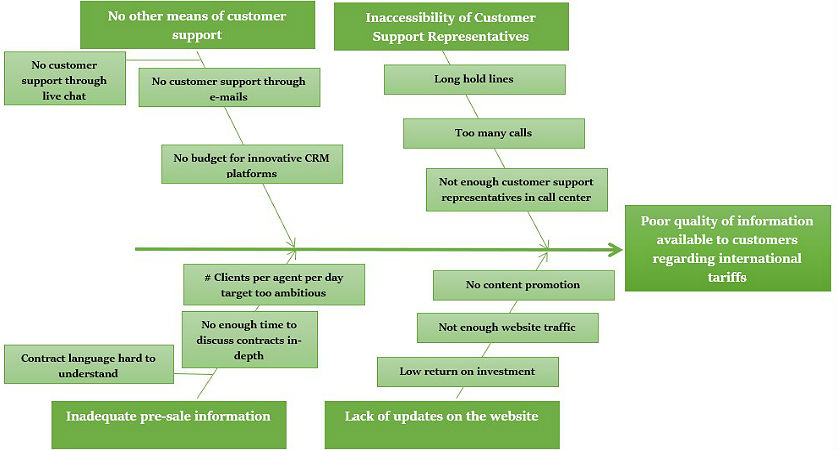
Figure 4: Fishbone (Ishikawa) Diagram
Clustering or cluster analysis, in its simplest form, is a highly useful technique as far as classifying problems is concerned.
If we were to perform a simple cluster analysis on the information identified through the Ishikawa Diagram, for our telecommunications company, we’d see that this tool would prove extremely useful when it comes to narrowing down the main areas/activities that the organization should further look into.
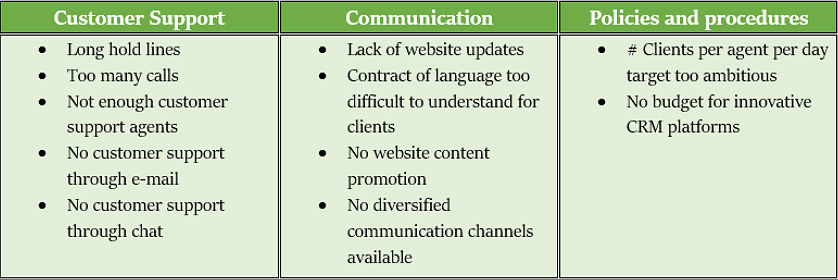
Figure 5: Cluster analysis
3. Evaluate alternatives
Choosing the most suitable solution for the problem at hand implies that advantages and disadvantages are presented for every solution identified during the performance review meeting or alternate problem-solving sessions.
This is defined as the evaluation phase. The best alternative will be the one that minimizes risks and costs, and maximizes benefits. Some techniques, such as cost-benefit analysis or stakeholder analysis can help managers identify the best solution the organization can consider for future application.
Getting back to our telecommunications company, after having identified that the main contributing factor for their high number of customer complaints is the poor quality of information offered, and finding out the main causes behind this problem, the next step is to propose solutions.

Figure 6: Evaluating alternatives
When it comes to customer support, a solution with a high return on investment would be to implement an E-mail Customer Service System.
As far as the area of information/communication is concerned, redesigning the company’s website would be conducive towards greater transparency and raise awareness on international tariffs.
Since the organizational budget allows for only one of these initiatives to be implemented, they must be evaluated and only the most viable one maintained.
4. Select the proper alternative
A technique as simple as Pros/Cons enables a useful comparison analysis between two alternative solutions proposed for solving the problem of our telecommunications company.
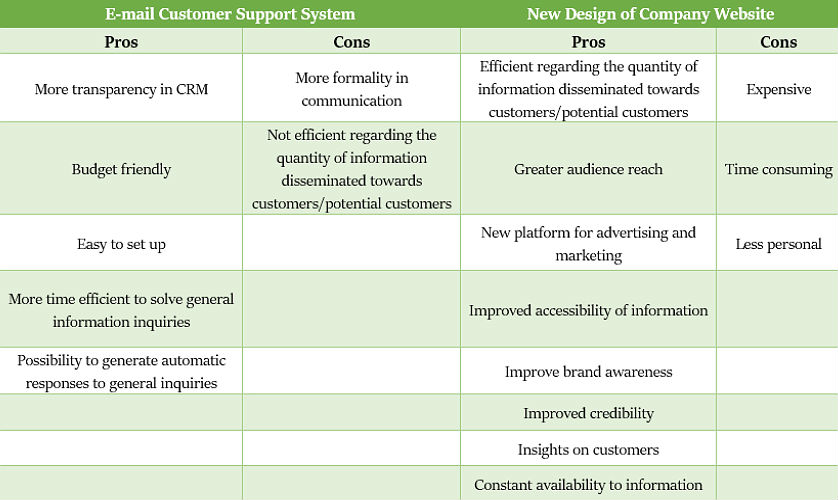
Table 1: Pro/Cons Technique
Once the most beneficial alternative has been identified, managers must make sure that the decision is implemented correctly. This can be achieved through the constant monitoring of resources, timeline, objectives and stakeholders.
Furthermore, setting regular monitoring intervals (daily, weekly, monthly etc.) is useful for finding the perfect balance between excessive and insufficient monitoring.
During this phase, data collection becomes important and valuable again, given that the last step, evaluating impact, is based on the analysis of data previously collected.
5. Evaluate impact
Due to budgetary constraints and the fact that, while implementing a new website could bring many additional benefits, it is more expensive, the problem at hand is believed to be solved more efficiently through e-mail customer support.
Therefore, the telecommunications company we have been following up on throughout this article decides to implement the first idea, an E-mail Customer Support System.
Now comes the last step in their decision-making process – evaluating impact. It implies making use of the lessons learnt by tackling the problem it has identified and assessing the effectiveness of its chosen solution.
This step enables an organization to make better decisions in the future, based on past experiences. You can generate real impact by turning improvement ideas into initiatives and managing such initiatives for the ultimate benefit of boosting organizational results.
Image sources:
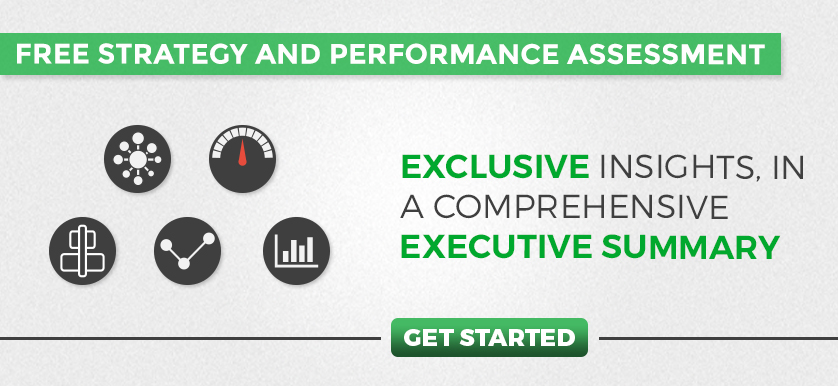
Tags: Decision making, Strategic Management, strategic planning





